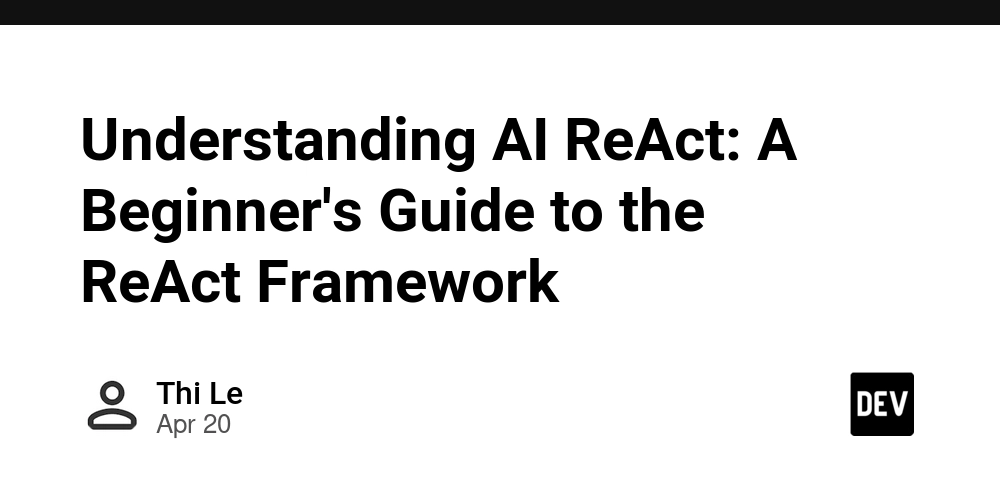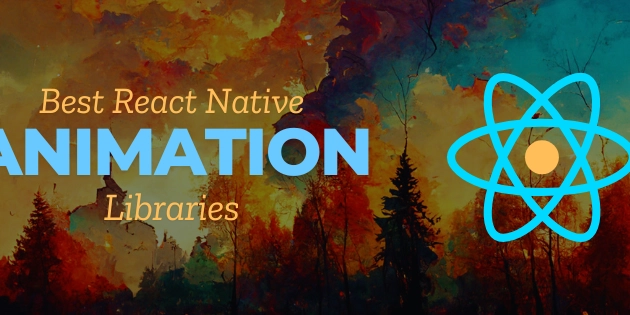Understanding AI ReAct: A Beginner's Guide to the ReAct Framework
Artificial Intelligence is transforming how we solve problems, and one exciting tool in this space is the ReAct framework. If you’re new to AI, don’t worry—this blog post will break down what ReAct is, how it works, and why it’s a game-changer for real-world applications. Let’s dive in! What is the ReAct Framework? ReAct stands for Reasoning and Acting, a method that combines thinking and doing to help AI systems tackle complex tasks. Imagine you’re trying to plan a trip: you think about your options (reasoning) and then book flights or reserve a hotel (acting). ReAct enables AI to do both—reason through problems and take actions to solve them. Unlike traditional AI models that might only provide answers or follow strict instructions, ReAct allows AI to: Think step-by-step: Break down a problem logically. Act on insights: Interact with tools, databases, or environments to get results. Adapt dynamically: Adjust its approach based on new information. This makes ReAct incredibly versatile for tasks like answering questions, automating workflows, or even controlling robots. How Does ReAct Work? The ReAct framework operates by blending two key processes: Reasoning: The AI evaluates the task, considers possible solutions, and plans its approach. For example, if asked, “What’s the weather in Paris today?” the AI might reason: “I need to check a reliable weather source for Paris, France, for April 20, 2025.” Acting: The AI takes concrete steps, like querying a weather API or searching the web, to gather the necessary information. Here’s a simple example of ReAct in action: Task: Find a recipe for chocolate chip cookies. Reasoning: The AI thinks, “I need a recipe with clear ingredients and steps, preferably from a trusted cooking site.” Acting: The AI searches online, retrieves a recipe, and presents it to you with ingredients and instructions. ReAct loops between reasoning and acting until the task is complete, making it ideal for dynamic, multi-step challenges. Why ReAct Matters in the Real World The ReAct framework is more than a cool concept—it’s already powering real-world applications. Here are a few ways it’s making an impact: Customer Support: ReAct-driven chatbots can reason through customer queries, access databases, and provide personalized solutions, like troubleshooting a device or processing refunds. Healthcare: AI using ReAct can analyze patient data, reason about symptoms, and suggest next steps, such as scheduling tests or recommending treatments. Education: ReAct can create tailored learning plans by reasoning about a student’s needs and acting to recommend resources or quizzes. By combining thought and action, ReAct makes AI more human-like, capable of handling tasks that require both brains and initiative. How to Apply ReAct in Your Life You don’t need to be a tech wizard to use ReAct-inspired ideas! Here’s how you can apply its principles: Break Down Problems: When faced with a task, think step-by-step like ReAct. For example, planning a party? Reason through the guest list, budget, and venue before acting. Use AI Tools: Try AI platforms like Grok (created by xAI) that leverage frameworks like ReAct. Ask it to help with research, planning, or automation tasks. Experiment and Learn: Test ReAct-based AI tools for personal projects, like organizing your schedule or finding creative solutions to everyday challenges. Why Get Excited About ReAct? ReAct is a glimpse into the future of AI—where machines don’t just follow orders but think and act like problem-solving partners. Whether you’re a student, a professional, or just curious, understanding ReAct opens the door to using AI in smarter, more practical ways. Want to explore more? Try asking an AI like Grok to solve a multi-step task for you, and see ReAct in action. The possibilities are endless, and you’re just getting started! What do you think about ReAct? Share your thoughts or try experimenting with AI tools to see how they can simplify your life. Happy exploring!

Artificial Intelligence is transforming how we solve problems, and one exciting tool in this space is the ReAct framework. If you’re new to AI, don’t worry—this blog post will break down what ReAct is, how it works, and why it’s a game-changer for real-world applications. Let’s dive in!
What is the ReAct Framework?
ReAct stands for Reasoning and Acting, a method that combines thinking and doing to help AI systems tackle complex tasks. Imagine you’re trying to plan a trip: you think about your options (reasoning) and then book flights or reserve a hotel (acting). ReAct enables AI to do both—reason through problems and take actions to solve them.
Unlike traditional AI models that might only provide answers or follow strict instructions, ReAct allows AI to:
- Think step-by-step: Break down a problem logically.
- Act on insights: Interact with tools, databases, or environments to get results.
- Adapt dynamically: Adjust its approach based on new information.
This makes ReAct incredibly versatile for tasks like answering questions, automating workflows, or even controlling robots.
How Does ReAct Work?
The ReAct framework operates by blending two key processes:
- Reasoning: The AI evaluates the task, considers possible solutions, and plans its approach. For example, if asked, “What’s the weather in Paris today?” the AI might reason: “I need to check a reliable weather source for Paris, France, for April 20, 2025.”
- Acting: The AI takes concrete steps, like querying a weather API or searching the web, to gather the necessary information.
Here’s a simple example of ReAct in action:
- Task: Find a recipe for chocolate chip cookies.
- Reasoning: The AI thinks, “I need a recipe with clear ingredients and steps, preferably from a trusted cooking site.”
- Acting: The AI searches online, retrieves a recipe, and presents it to you with ingredients and instructions.
ReAct loops between reasoning and acting until the task is complete, making it ideal for dynamic, multi-step challenges.
Why ReAct Matters in the Real World
The ReAct framework is more than a cool concept—it’s already powering real-world applications. Here are a few ways it’s making an impact:
- Customer Support: ReAct-driven chatbots can reason through customer queries, access databases, and provide personalized solutions, like troubleshooting a device or processing refunds.
- Healthcare: AI using ReAct can analyze patient data, reason about symptoms, and suggest next steps, such as scheduling tests or recommending treatments.
- Education: ReAct can create tailored learning plans by reasoning about a student’s needs and acting to recommend resources or quizzes.
By combining thought and action, ReAct makes AI more human-like, capable of handling tasks that require both brains and initiative.
How to Apply ReAct in Your Life
You don’t need to be a tech wizard to use ReAct-inspired ideas! Here’s how you can apply its principles:
- Break Down Problems: When faced with a task, think step-by-step like ReAct. For example, planning a party? Reason through the guest list, budget, and venue before acting.
- Use AI Tools: Try AI platforms like Grok (created by xAI) that leverage frameworks like ReAct. Ask it to help with research, planning, or automation tasks.
- Experiment and Learn: Test ReAct-based AI tools for personal projects, like organizing your schedule or finding creative solutions to everyday challenges.
Why Get Excited About ReAct?
ReAct is a glimpse into the future of AI—where machines don’t just follow orders but think and act like problem-solving partners. Whether you’re a student, a professional, or just curious, understanding ReAct opens the door to using AI in smarter, more practical ways.
Want to explore more? Try asking an AI like Grok to solve a multi-step task for you, and see ReAct in action. The possibilities are endless, and you’re just getting started!
What do you think about ReAct? Share your thoughts or try experimenting with AI tools to see how they can simplify your life. Happy exploring!











































![Mobile Legends: Bang Bang [MLBB] Free Redeem Codes April 2025](https://www.talkandroid.com/wp-content/uploads/2024/07/Screenshot_20240704-093036_Mobile-Legends-Bang-Bang.jpg)
























![Apple Shares Official Trailer for 'Long Way Home' Starring Ewan McGregor and Charley Boorman [Video]](https://www.iclarified.com/images/news/97069/97069/97069-640.jpg)
![Apple Watch Series 10 Back On Sale for $299! [Lowest Price Ever]](https://www.iclarified.com/images/news/96657/96657/96657-640.jpg)
![Apple Slips to Fifth in China's Smartphone Market with 9% Decline [Report]](https://www.iclarified.com/images/news/97065/97065/97065-640.jpg)














![What features do you get with Gemini Advanced? [April 2025]](https://i0.wp.com/9to5google.com/wp-content/uploads/sites/4/2024/02/gemini-advanced-cover.jpg?resize=1200%2C628&quality=82&strip=all&ssl=1)































































































_Andreas_Prott_Alamy.jpg?width=1280&auto=webp&quality=80&disable=upscale#)




















































































![[The AI Show Episode 144]: ChatGPT’s New Memory, Shopify CEO’s Leaked “AI First” Memo, Google Cloud Next Releases, o3 and o4-mini Coming Soon & Llama 4’s Rocky Launch](https://www.marketingaiinstitute.com/hubfs/ep%20144%20cover.png)













































































































































![[DEALS] The All-in-One Microsoft Office Pro 2019 for Windows: Lifetime License + Windows 11 Pro Bundle (89% off) & Other Deals Up To 98% Off](https://www.javacodegeeks.com/wp-content/uploads/2012/12/jcg-logo.jpg)





























































































